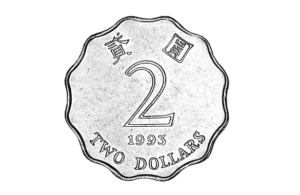
By Janik Litalien, March 13th, 2018
As I mentioned in my previous entries, when teaching, I like to use simple concepts and examples to convey my points.
One of those example is the Hong Kong $2 coin: it’s about a millimeter thick with bumpy ridges to the edge.
Yes, the example also applies to the edge of a quarter or the surface of a toonie, you pick the currency…
When you’re digging for change in your pockets, stop and think about that action for a minute: you often do not need to take out all your change, you can just feel the surface or the edges of that particular coin, in your pocket, with your fingertips and locate what you’re looking for by touch alone.
Think about this for a moment: when you’re looking for that coin you do it solely by tactile feeling.
The tiny surface on your fingertips, millimeters in surface, that’s in contact with your pocket change (and whatever else is in your pockets) provides you with sufficient information without needing your eyes, to be able to find the specific coin you’re looking for…
That’s a lot of information conveyed by such a minute area… and you don’t dig into your pocket with a tense hand or grip, do you? It’s usually done in a casual, relax way…
The same applies in the training: when you avoid contact or when you’re tense, you automatically deprive yourself a ton of information on who it is that you’re working with: is their grab tense or relax? Is their punch tense or relax?
When your friend walks up behind you and pats you on the back, even without seeing him, even if you’re startled a little, you will usually not abruptly turn around and take him down or punch his/her lights out: like for the coin analogy, that touch conveys enough information for you to know and understand that the intent behind that contact is not a hostile one.
If indeed it is someone coming to you with hostile intentions, you will immediately feel and understand that as soon as that contact is made, you won’t need to see the person…once again, all based on the information conveyed through that contact.
Yes, our eyes do provide us with a lot of information that we need in everyday life, but we often forget that touching, sensing and feeling also give us vital information from our surroundings.
Our vision should not be the be-all end-all of the way we perceive the world and as such, we should be listening not only with our ears but with our whole body, we should not be avoiding contact when we train but welcoming it for the information it provides.
That information can often make a world of difference.

WhatsApp us